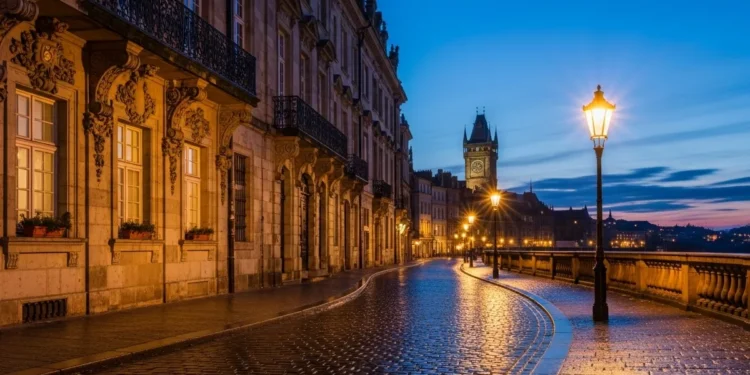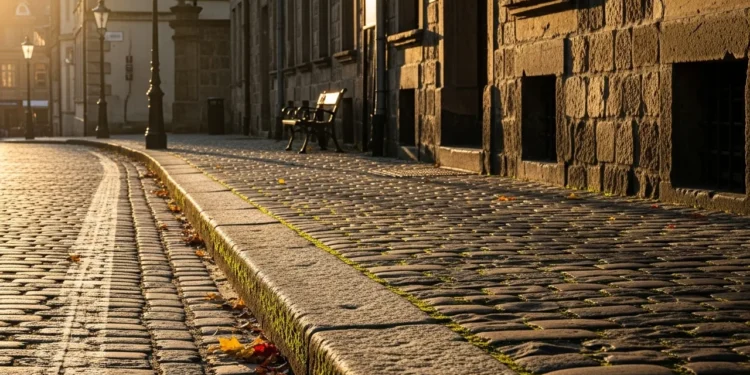Exploring the multifaceted role of sidewalks in urban environments reveals their significance beyond mere pathways. This blog post delves into the evolution of sidewalks as vital spaces for social interaction, activism, and community identity. From historical struggles for civil rights to contemporary challenges of accessibility and equity, Walkways embody the complexities of urban planning and social dynamics. Discover how these vital infrastructures not only facilitate movement but also serve as platforms for resistance and community engagement, highlighting the ongoing importance of inclusive urban design in fostering equitable public spaces.
Table of Contents
Introduction to Sidewalks: More Than Just A Path
Sidewalks hold a significant place in urban landscapes; they serve as more than mere pathways for pedestrians. Their design and function reflect the complexities of urban planning, social interactions, and historical contexts that shape our cities. Understanding the pedestrian rights history reveals that sidewalks have often been sites of contention, where issues of accessibility, equality, and community dynamics converge. As spaces that accommodate both movement and gathering, walkways are essential in shaping our daily experiences and interactions within urban environments.
The evolution of walking paths into organized sidewalks can be traced back to their role in social movements. During various protests, the sidewalks have been utilized as platforms for expression. Activists have historically gathered in these public spaces to advocate for civil rights, calling attention to racial segregation in public spaces and demanding justice and equality. This connection between walkways and activism underscores the power of pedestrian access in facilitating change, reinforcing that these paved paths extend beyond simple transportation routes; they are critical venues for public discourse.
The interplay of sidewalks with class dynamics highlights another essential aspect of urban planning. Accessibility to sidewalks has not always been equitable, with marginalized communities sometimes facing barriers that limit their movement in public space. Historical and contemporary examinations of sidewalk access and class reveal the disparities that exist within urban settings, often reflecting broader societal inequalities. As society continues to evolve, the significance of walkways in facilitating or inhibiting movement underscores the need for inclusive urban design that caters to all citizens.
In summary, sidewalks are integral components of urban environments that contribute to the fabric of community life, embodying a history rich with social struggles, access issues, and the push for equitable public spaces. They serve as vital infrastructures for not only pedestrian movement but also the collective voices of communities striving for change.
The Role of Sidewalks in Urban Planning and Control
Sidewalks, often perceived as simple pathways for pedestrians, have historically played a significant role in urban planning and control. The design and regulation of sidewalks are deeply intertwined with policies that reflect societal priorities and address issues such as pedestrian rights history. In many cities, sidewalks have been integral to zoning laws that dictate not only the use of land but also the flow of human traffic. Urban planners have utilized sidewalks as a framework to facilitate the movement of individuals while simultaneously regulating which groups have access to particular public spaces.
For instance, in the early 20th century, city layouts in the United States became increasingly influenced by social stratification. Racial segregation in public spaces was often enforced through the design of walkways and adjacent streets. In many instances, sidewalks served as a form of boundary that maintained social order. Access to sidewalks in wealthier neighborhoods was often well-maintained and integrated, while less affluent areas were frequently neglected. This discrepancy highlights the intersection of sidewalk access and class, where urban planning decisions affect mobility based on economic status.
Moreover, sidewalks have been used as tools of control through their very design. The spacing, surface materials, and associated amenities often reflect broader societal values, dictating pedestrian movement within a city. In town planning, the evolution of walkways is telling; they become arenas of both inclusion and exclusion, shaping not only how people navigate urban spaces but also how they experience the city itself. Examples abound, from New York City’s grid system to the winding paths of San Francisco, illustrating different approaches to walking in city evolution. Such planning decisions wield significant power, impacting everything from daily commutes to strolls and shaping the social dynamics of urban life.
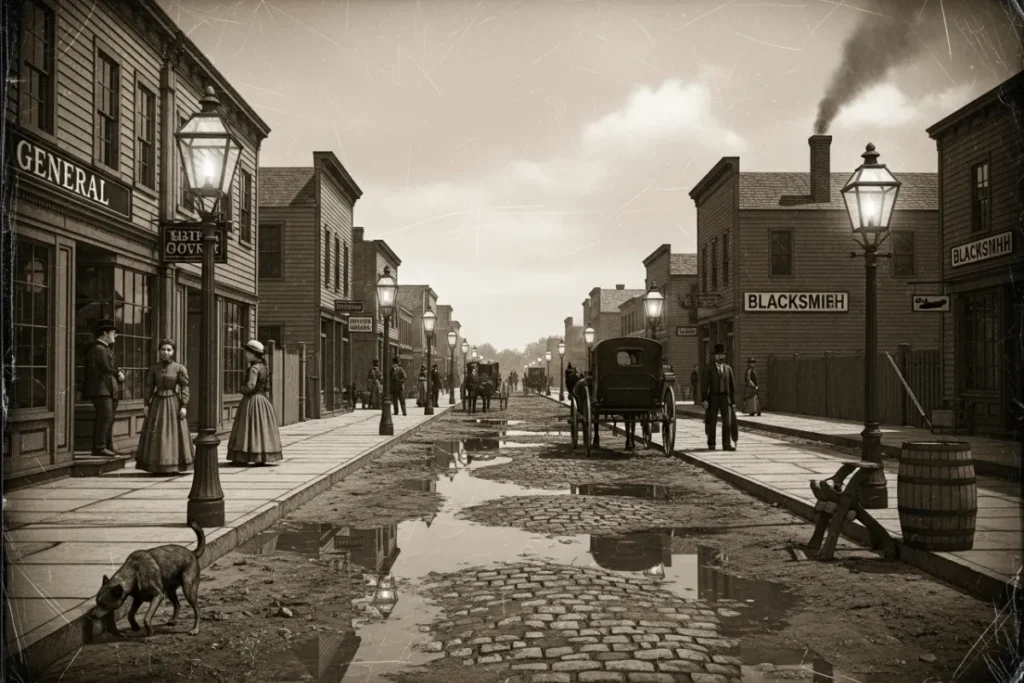
Resistance Movements: Sidewalks as Protest Spaces
Throughout history, sidewalks have served as vital platforms for resistance and activism, becoming synonymous with social change and public engagement. The pedestrian rights history illustrates how these spaces are more than mere pathways; they have often been the epicenters where citizens gather to voice dissent and challenge injustices. Between the late 19th and early 20th centuries, as urban environments evolved, sidewalks emerged as prime locations for notable protests and demonstrations. These events highlighted the integral role of walkways in urban planning, where the architecture of the city itself became a backdrop for civic engagement.
One of the most significant periods where sidewalks became prominent protest spaces was during the Civil Rights Movement in the 1960s. Iconic marches across America—Dallas, Birmingham, and Washington D.C.—took place on sidewalks as activists asserted their right to walk freely in public spaces that had historically been marred by racial segregation. The use of walkways during these demonstrations underscored the intersection of pedestrian rights and civil rights, illustrating how walking was both a literal and symbolic act of defiance against systemic oppression.
Furthermore, sidewalks have continually served as arenas for contemporary activism, showcasing the ongoing struggle against social inequalities and injustices. Grassroots movements across various communities have mobilized on sidewalks to highlight issues such as sidewalk access and class disparities. With the increasing urbanization and gentrification of cities, sidewalks remain pivotal in the fight against exclusion, acting as communal spaces where individuals gather to demand change. This pattern of using walkways as protest spaces illustrates their importance as vital components of the evolution of public discourse, enabling citizens to advocate for their rights and freedoms in the face of societal challenges.
Segregation and the Marginalization of Sidewalk Use
The history of sidewalks is intricately tied to the broader themes of urban planning and social equity. Segregation in public spaces, including sidewalks, has long been shaped by racial and socioeconomic factors, leading to significant disparities in access and maintenance. Throughout history, certain communities have faced systemic barriers that restrict their use of sidewalks, further marginalizing them within the urban landscape.
During the Jim Crow era, policies were established to enforce racial segregation, which extended into the design and accessibility of public spaces, including sidewalks. For instance, in many Southern cities, regulations were implemented that limited the availability of walkways in predominantly Black neighborhoods. This not only hindered mobility but also contributed to a broader pattern of neglect toward infrastructure in these communities. The lack of well-maintained sidewalks in these areas has often forced residents to navigate dangerous roads, thereby exacerbating social tensions and limiting access to essential services.
Contemporary examples of sidewalk access disparities can be observed in urban environments where gentrification and socioeconomic divisions intersect. Affluent neighborhoods often benefit from well-planned walkways and pedestrian-friendly design, while low-income areas are left with crumbling infrastructure that fails to meet the needs of their residents. The following are effects of this uneven urban planning: sidewalk maintenance varies dramatically between neighborhoods, further illustrating the importance of socioeconomic status in determining access to safe pedestrian routes.
Racial segregation in public spaces continues to impact who is allowed to walk freely and safely within a city, with marginalized communities often relying on poorly designed walkways that reflect broader patterns of neglect in urban planning. This complicated legacy impacts current generations, as pedestrian rights history shows how the fight for equitable access to sidewalks is still ongoing, particularly in the context of activism for improved mobility for all. In examining the way sidewalks have been designed and maintained throughout history, we can better understand the vital connections between racial dynamics, urban development, and pedestrian rights.
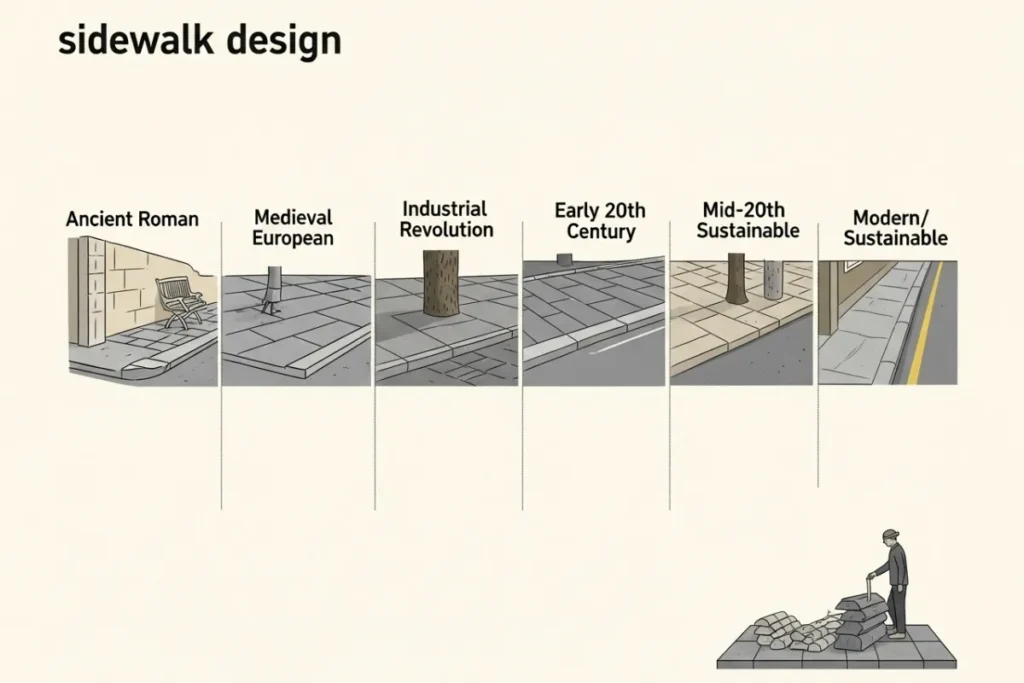
Stonewall Inn Sidewalk, New York City
The Stonewall Inn in New York City is perhaps one of the most iconic sites in the context of pedestrian rights. In June 1969, patrons of this gay bar engaged in a series of spontaneous demonstrations against a police raid, an event widely considered the catalyst for the modern LGBTQ+ rights movement. The sidewalk outside the Stonewall Inn served not only as a battleground for a decades-long fight for equality but also as a symbol of resistance against systemic oppression, racial segregation in public spaces, and societal norms that marginalized the LGBTQ+ community. Over the years, this particular sidewalk has transformed into a historic site, reinforcing the notion that sidewalks can serve as platforms for political dissent and community empowerment.
Selma Sidewalks, Alabama
The sidewalks of Selma, Alabama, hold significant historical weight as they were integral to the Civil Rights Movement in the 1960s. The Selma to Montgomery marches, notably led by figures such as Martin Luther King Jr., sought to address systemic racial discrimination and voting rights issues. These sidewalks witnessed countless peaceful protests, including the infamous march across the Edmund Pettus Bridge in March 1965, which galvanized national attention to the movement. The walkways here represent both the struggles faced by African Americans and the fight against racial segregation in public spaces. In urban planning, the significance of such sidewalks is often overlooked; yet, they played a vital role in the sociopolitical landscape, becoming a tableau for the evolution of walking as an act of defiance and unity in the face of injustice.
Modern Implications
These case studies underscore the importance of sidewalks in urban environments as spaces of expression and community identity. Both the Stonewall Inn and Selma sidewalks demonstrate how pedestrian access can serve as more than just a functional aspect of city life; it can be a site for activism, reflection, and change. The historical contexts tied to these walkways illustrate the potential for pedestrian rights to merge with broader societal issues, such as the fight against class disparities and the struggles for equality. As we think about sidewalks and urban planning in contemporary society, it is essential to recognize their role in promoting inclusivity and accessibility for all individuals, thus affirming the ongoing significance of these historic spaces.
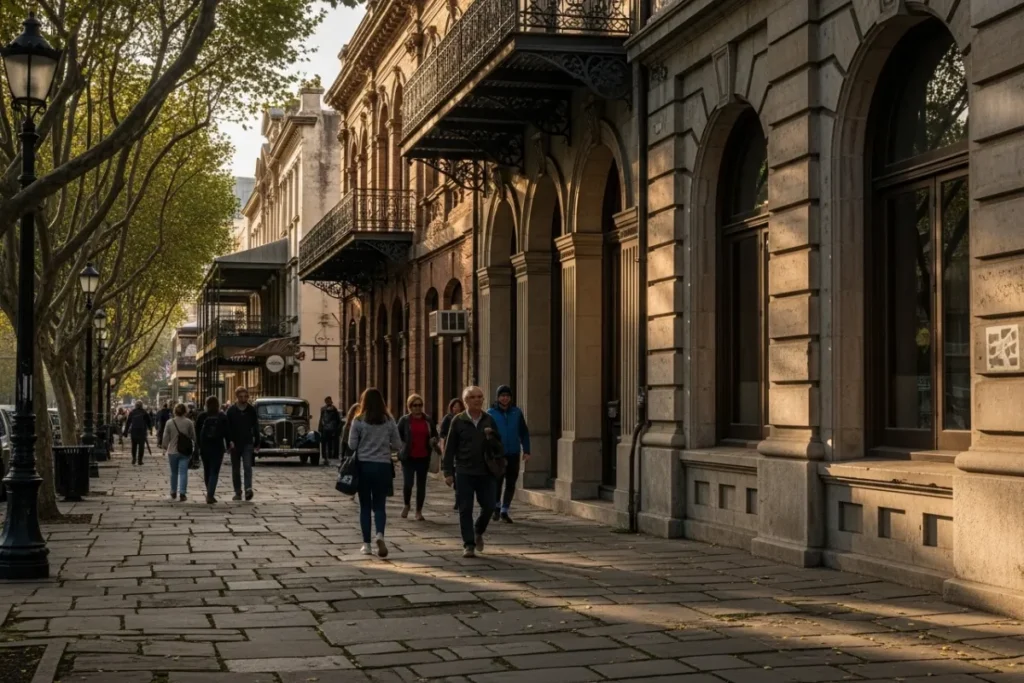
Urban Redesign: Rethinking Sidewalk Space in Modern Cities
The evolution of sidewalks reflects the complexities of pedestrian rights history, pivoting significantly from a time when walking was often criminalized to the present era, where inclusivity and accessibility are paramount in urban planning. Modern cities are increasingly acknowledging the importance of sidewalks not just as walkways but as vital spaces for community engagement, safety, and mobility. This shift stems from a deeper understanding of how pedestrian rights have historically intersected with broader social issues, such as racial segregation in public spaces and the socio-economic disparities evident in sidewalk access and class.
Contemporary urban design trends focus on creating multifunctional sidewalk spaces that prioritize accessibility for all citizens. Cities are now incentivized to rethink their pavements, adapting to the needs of diverse populations, including individuals with disabilities, the elderly, and various socioeconomic groups. This transition often involves removing physical barriers that have historically limited pedestrian movement and reimagining urban environments that facilitate walking in city evolution. Modern movements championing the expansion of pedestrian rights have emphasized the necessity for safe, well-maintained sidewalks as integral components of urban infrastructure.
The relationship between sidewalks and urban planning is foundational; however, the lessons learned from past designs can inform the strategies of today. By looking back at the pedestrian rights history, urban planners can better grasp how design choices might inadvertently perpetuate inequalities or dismiss the needs of various demographics. Consequently, there’s a burgeoning advocacy for redesigning pavements to create inclusive, inviting spaces for socialization and transit. In achieving this goal, cities can not only rethink their physical layouts but also reaffirm a commitment to fostering vibrant, equitable communities. This nuanced approach to sidewalk space not only enhances urban environments but also reinforces the fundamental rights of pedestrians in navigating public spaces.
The Future of Sidewalks: Challenges and Opportunities
The future of sidewalks is increasingly shaped by a complex interplay of challenges and opportunities, particularly in the context of urban settings experiencing rapid transformation. As cities evolve, the historical context of pedestrian rights history reveals that pavements have long been more than mere thoroughfares; they are public spaces that reflect societal values, accessibility, and equity. The integration of sidewalks into urban planning strategies is essential to ensure that these spaces are inclusive and welcoming to all residents, regardless of their socioeconomic background.
One pressing challenge is the phenomenon of gentrification, which often results in the displacement of long-term residents and the alteration of pedestrian access in neighborhoods. This can exacerbate existing disparities in sidewalk access and use, as new developments may prioritize aesthetics over the needs of diverse communities. Urban planners must strive for a balance that preserves community identities while promoting equitable access to sidewalks and other public spaces. Moreover, addressing racial segregation in public spaces is vital in this context. Understanding the historical injustices associated with sidewalk access enables cities to prioritize inclusive designs that honor the diverse populations that inhabit them.
Climate change also presents challenges and opportunities for urban pavements. As cities contend with rising temperatures and increased precipitation, effective urban planning must incorporate features such as shade trees and permeable materials that can enhance both the functionality and sustainability of sidewalks. Technological advancements, such as smart sidewalk designs, can further contribute to creating more responsive and adaptable urban environments. These innovations can enhance pedestrian safety and accessibility while promoting walking as a key component of urban life.
Ultimately, the future of sidewalks hinges on a recognition of their role in shaping cities. By adopting equitable policies and innovative designs, municipalities can create sidewalks that cater to the needs of all citizens, facilitating a more robust and connected urban experience. In conclusion, by examining and addressing the historical and contemporary challenges surrounding sidewalks, cities can ensure that these vital public spaces reflect the diverse needs and aspirations of their communities.
Personal Narratives: Walking and Community Stories
Walking is a fundamental aspect of daily life, bridging the gap between various communities and individuals. Whether navigating bustling urban environments or quieter suburban streets, the significance of sidewalks emerges prominently in the pedestrian rights. Numerous personal narratives illustrate the profound connections people foster with their surroundings through walking. For many, their experiences on sidewalks encapsulate not just a mode of transportation but also an arena for community engagement and identity formation.
For instance, a resident of a historic neighborhood in an urban setting may recount how the sidewalks served as the backdrop for countless childhood episodes, where friends would gather to play, adults socialized, and cultural events unfolded. These sidewalks were more than pathways; they represented a communal lifeline that nurtured relationships and sustained a sense of belonging. Simultaneously, stories emerge that highlight the struggles faced within these spaces, particularly when considering the implications of racial segregation in public spaces. Many individuals narrate experiences where access to sidewalks was hindered by systemic barriers, thereby emphasizing the vital need for inclusive urban planning.
Additionally, the connection between sidewalks and class cannot be overlooked, as personal accounts often reveal disparities in sidewalk access that correspond to socioeconomic status. For some, walking may have been a source of joy and freedom, while for others, it might symbolize exclusion and restriction. These diverse experiences showcase the multifaceted role sidewalks play in urban landscapes. They enable individuals to navigate their communities, engage with one another, and assert their rights within public spaces.
Indeed, the shared stories of walking in city evolution reflect not only individuals’ experiences but also reveal the historical trajectory of pedestrian rights and community dynamics. In conclusion, the vibrant narratives surrounding sidewalks provide invaluable insight into the profound impact these seemingly simple pathways have on shaping identity, community ties, and social equity.
| Theme | Description | Personal Narrative Example |
|---|---|---|
| Fundamental Role of Walking | Differences in sidewalk quality and availability are tied to class, affecting people’s feelings of inclusion or exclusion. | “Whether navigating bustling urban environments or quieter suburban streets…” |
| Community Engagement | Sidewalks as shared spaces for socializing, play, and cultural events | Systemic barriers that limit access to sidewalks highlight the need for inclusive urban design |
| Racial Segregation & Inclusion | Differences in sidewalk quality and availability are tied to class, affecting people’s feelings of inclusion or exclusion | “Many individuals recall being hindered by discriminatory policies that blocked sidewalk access in certain areas…” |
| Socioeconomic Disparities | Walking connects people and places, forming an essential part of daily life. | “For some, walking brought freedom and joy; for others, it represented exclusion due to poorly maintained or absent sidewalks in low‑income neighborhoods.” |
| Historical Evolution | How personal stories reflect the broader development of pedestrian rights and community dynamics over time | “Shared walking narratives reveal not only individual experiences but also the historical trajectory of pedestrian rights and evolving urban community relationships.” |
Conclusion: The Importance of Sidewalks in Our Shared History
Throughout history, sidewalks have served not just as pathways for pedestrian movement but as essential areas that reflect broader social issues, including pedestrian rights history, racial segregation in public spaces, and class disparities. The evolution of walking in urban environments underscores the significance of sidewalks in facilitating not only transportation but also civic engagement and community interaction. These spaces have been integral to our collective experiences, hosting everything from daily commutes to spontaneous gatherings that foster social bonds among diverse groups.
The relationship between sidewalks and urban planning is vital to understanding how cities design inclusive environments. Sidewalk access is paramount to ensuring that community members can navigate their neighborhoods freely and safely. This access should be recognized as a right rather than a privilege, particularly in addressing issues of racial segregation in public spaces. The systemic barriers that have historically restricted certain communities from enjoying equitable sidewalk access highlight the need for ongoing advocacy and reform. Individuals and organizations alike must remain vigilant in ensuring that all voices are heard in discussions surrounding pedestrian rights, especially as cities continue to grow and evolve.
As we reflect on our personal experiences with sidewalks, it is clear that they are more than mere concrete strips; they serve as conduits for movement, expression, and community. Encouraging equitable access to these vital spaces can produce a ripple effect that enhances social cohesion and builds a stronger community fabric. Thus, it is our responsibility to recognize the importance of sidewalks in our shared history and advocate for environments that foster equality and accessibility. Moving forward, let us remain committed to championing equitable pedestrian rights and the essential role that sidewalks play in enriching urban life.
